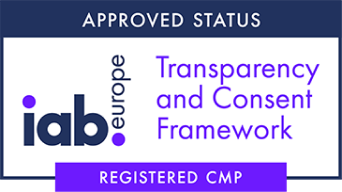Rapidly increase traffic to your blog
Owning a blog has undeniable advantages, especially for businesses in the fashion or home sectors. A blog is effectively a source of acquisition that meets various content marketing objectives, including optimizing your online presence. It’s a particularly interesting lever for generating traffic and














affiliation platform for the Home & Fashion Made in France universe
of sales generated in 2023 for our advertisers
1 invested generates over €14 in sales
Increase blog traffic with SEO
Rapidly increasing blog traffic through SEO is based on two fundamental pillars: regular blog writing and SEO optimization. By combining these techniques, a blog can not only attract more organic traffic, but also build reader loyalty and improve its online presence.
Write regular blog posts
Publishing frequently keeps your audience engaged and stimulates search engine algorithms. Each new article is an opportunity to target new keywords and cover a variety of topics. This increases your chances of appearing in search results. To create relevant and engaging content, it’s important to understand your audience’s needs and interests.
By writing blog posts on a regular basis, you show search engines that your site is active and up-to-date.
Google favors sites that produce fresh, relevant content. A consistent publication frequency, whether weekly or bi-weekly, can also encourage readers to return regularly, increasing recurring traffic.
Optimize your blog's SEO
SEO optimization involves several steps to attract organic traffic to a blog.
Relevant keywords
SEO optimization is a powerful lever for attracting organic traffic to a blog. It starts with thorough research into relevant keywords. These should be strategically integrated into titles, subtitles, body text and meta tags. Using tools like Google Keyword Planner can help you identify the keywords most searched for by Internet users.
On-Page Optimization
Don’t neglect on-page optimization either. This includes the optimization of title tags, meta descriptions, URLs, as well as the appropriate use of H1, H2 tags, etc. To improve user experience and reduce bounce rates, your content should be well-structured and easy to read, with short paragraphs and clear sentences.
Loading speed
Optimizing site loading speed is an important detail not to be forgotten. As well as offering a better user experience, a fast site is ranked higher by search engines. Tools like Google PageSpeed Insights can help identify areas for improvement. Make sure your site is mobile-friendly too. Don’t forget that a large proportion of users access blogs via mobile devices.
Off-page optimization
Finally, consider off-page optimization, which involves creating quality backlinks. Getting inbound links from authoritative sites in the same field increases the blog’s credibility and authority. To generate natural backlinks, you can actively participate in forums, write guest posts on other blogs and share your content on social networks.
Generate traffic to your blog through social networks
Indeed, social networks have become essential platforms for generating traffic. Rapidly increasing blog traffic through social networking requires a well-defined strategy and effective use of the various platforms. To achieve this, a number of steps and techniques need to be put in place.
Choose the right social platforms
Each social network has its own characteristics and target audiences. Instagram, for example, is ideal for visual content, LinkedIn for professional content, and Twitter for quick updates and real-time interaction. So you need to determine where your target audience is and focus your efforts on these specific platforms to showcase your blog.
Use relevant hashtags
Hashtags make your content more discoverable on platforms like Instagram, Twitter, and LinkedIn. Using popular and relevant hashtags increases the reach of your posts. This in turn attracts a wider audience to your blog. Research the most effective hashtags in your niche to maximize their impact.
Optimize publication times
Publishing your content at times when your audience is most active on social networks can make a big difference. Analyze the statistics of your social platforms to identify the times and days when your audience is most engaged. This will help you optimize the timing of your publications.
Interact with your audience
Engagement isn’t just about creating content. It also extends to interacting with your audience. Replying to comments, asking questions, and participating in discussions in your niche can strengthen the relationship with your followers and encourage them to visit your blog regularly.
Collaborate with influencers
Influencers have significant reach and credibility with their followers. Collaborating with influencers in your field can rapidly increase your blog’s visibility. This can be done through mentions, content shares, or collaborations on specific projects. Influencer recommendations can drive significant, targeted traffic to your blog.
Use paid advertising
Advertising on social networks can be an effective way of driving traffic to your blog. Platforms like Facebook, Instagram, and LinkedIn offer targeted advertising options. They enable you to reach your ideal audience precisely. Well-designed advertising campaigns can generate a high return on investment by increasing the number of qualified visitors to your blog.
Analyze and adjust your strategies
Analyzing the performance of your social networking efforts helps you understand what’s working and what needs to be improved. Use analytics tools like Google Analytics and social network insights to track traffic, engagement and conversions. Adjust your strategies based on the data to continually optimize your efforts.
Use newsletters to drive traffic to your blog
You might not think about it, but e-mail newsletters can also generate traffic. Simply include a link to the latest article published in each newsletter to direct traffic from your e-mail list to your blog. However, there are a few rules you need to follow to convince your contacts.
Include links to your blog in every issue
To increase the visibility of your blog, systematically include links to it in every issue of your newsletter. You can integrate these links directly into the body of the newsletter, or simply mention your blog’s URL in the “Signature” section. The aim is to guide your readers to other interesting content you offer.
Use social media for every publication
Here again, social networks are a great help in promoting your newsletters. Post every new issue on sites like Facebook and Twitter. Always include direct links to your website. Use relevant hashtags to extend your reach.
Encourage your customers to subscribe
Use your customer base to increase subscriptions to your newsletter. Promote your newsletter on your website, in-store, and through email marketing campaigns. The more subscribers you have, the more traffic you generate to your blog.
Add share buttons to each issue
Make it easy to share your newsletter by including share buttons in every issue. This makes it easy for your readers to spread your useful or interesting content to their friends and followers. You can include sharing buttons for social networks or a manually transferable link.
Moderate mailing frequency
Limit the number of e-mails sent to your subscribers to avoid a high unsubscribe rate. Limit yourself to one mailing per week, or even every two weeks, to maintain your readers’ interest without saturating them.
Carefully craft the subject of your message
Pay particular attention to the subject of your message. It needs to be eye-catching to capture the recipient’s attention. An unattractive subject line is likely to lead readers to delete your e-mail without opening it.
Use advertising to attract more traffic
Advertising can also attract more traffic to your blog. But you need a good strategy to reach the right people. Here are a few tips to maximize the effectiveness of your efforts and avoid financial waste.
Identify your target
Rather than targeting everyone, focus on those who are most likely to be interested in your products or services. So start by researching your target audience in depth: what are their interests, and what needs can your blog satisfy? Answering these questions will enable you to build a relevant advertising campaign.
Set up campaign tracking
Tracking an advertising campaign allows you to target Internet users who are already interested in your offer. For example, if your blog specializes in the fashion or home sectors, you can target those who have searched for “interior design ideas” or “the latest fashion trends”. This approach significantly increases your chances of converting your campaign into qualified traffic.
By carefully targeting your audience and using effective campaign tracking, you maximize your chances of success in generating traffic via advertising.
Partnering with influencers through an affiliate program can extend the reach of your content to a targeted audience.
Affiliate marketing allows you to benefit from the visibility already established by affiliates, attracting a stream of qualified visitors to your blog.



